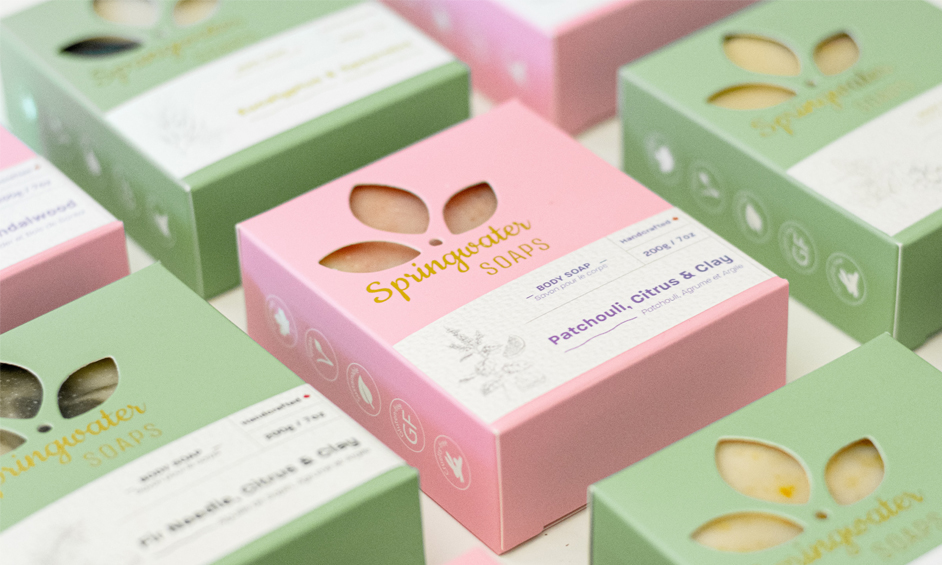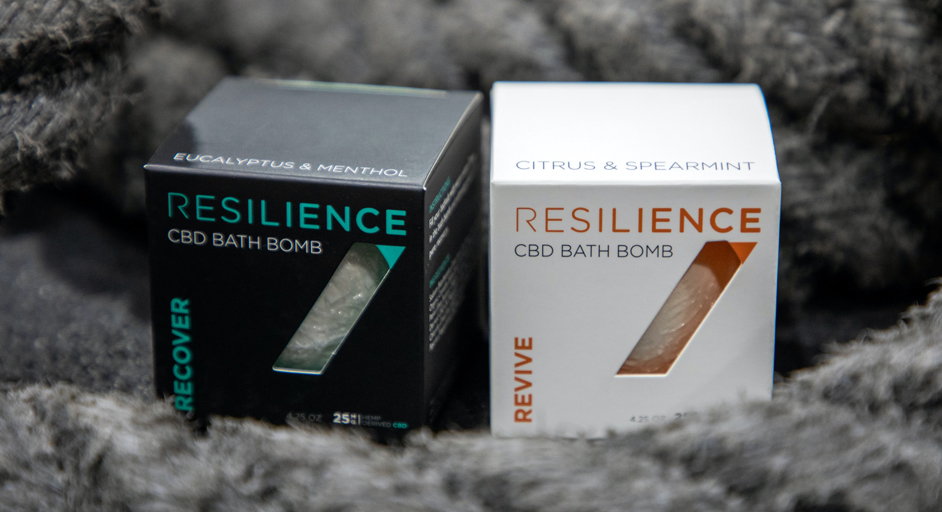What is Carton Packaging?
Posted by Julie Rotuno on 14th Jun 2022
From the pantry and refrigerator to the bathroom cabinet and the kids’ playroom, carton packaging is everywhere. These ubiquitous boxes can contain almost any kind of consumer goods. In fact, Grand View Research determined that this type of packaging is so popular that it will have a market size of $141.35 billion around the year 2025.
Why do so many companies choose carton packaging for their products? It’s probably because of characteristics like aesthetics, functionality and affordability. Moreover, this packaging type excels at protecting the items that are contained inside while also being easy to open and close.
What exactly is carton packaging, and what can it do for your business? Keep reading to find out.
What Is Carton Packaging?
Carton packaging most often takes the form of a box, but it does not follow that every box is considered a carton. Typically, a robust corrugated or rigid box is not defined as a carton. Instead, carton packaging isn’t quite so sturdy, but it still is strong enough for its intended purpose.
Study the industry long enough, and you will find that carton packaging may go by many different names. Among these are:
- Folding carton boxes
- Chipboard boxes
- Paperboard boxes
- Carton boxes
No matter what they are called, each of these items share certain characteristics in common. These include being made from paperboard that is cut, folded, printed on and laminated. For efficiency and convenience, carton packaging is shipped flat to the user who will fill it with their goods.
Where Does Carton Packaging Come From?
Way back in the 1840s, Charles Henry Foyle was a critical part of a bookshop dynasty. He was a pioneer in the fields of printing and packaging. In 1920, he founded a company that he called Boxfoldia. The company’s main product was decorative cartons that advertised the goods inside, and it is still in business today.
Back then, Foyle’s company and others like it used tacks and strings to hold together each box. The manufacturing process was laborious and expensive, which meant that cartons were most frequently used to package costly luxury items.
Something of a revolution occurred in 1879 when Robert Gair discovered quite by accident that a printing press was capable of mass producing carton packaging. Suddenly, this packaging type was more affordable and accessible, and it has only become more popular and widely used since then.
Mass production enabled even ordinary items to be packaged in superior cartons. This translated to longer shelf life and better protection. Further, carton packaging made it easy for companies to ensure that their name and logo were always in view.

What Are the Advantages of Carton Packaging?
Carton packaging is a practical solution for almost any product. Here are a few reasons why:
- Efficient use of space: When they are folded flat, nothing is easier to stack than carton packaging.
- Easy to use: Folding paperboard works like a charm for opening and closing multiple times.
- Compatible with automated machinery: Less manpower is needed for folding and packing.
- Affordable: When folded flat, carton packaging saves a ton on shipping. Plus, the material used to make this packaging is inexpensive.
- The ultimate in flexibility: Carton packaging is available in every imaginable shape, and it can be used to hold almost anything, even liquids.
- Surprisingly sturdy and durable so that products are always protected.
Did you know that some carton packaging can even deter crime? Many organizations are including anti-counterfeit and anti-theft technology in every box. Some companies are even using radio frequency identification, or RFID, in their packaging to beat counterfeiters.
Beyond Functionality
Carton packaging is affordable and eminently functional, but this does not mean that it has to look utilitarian. Thanks to various printing processes, it is possible to pack your company’s boxes with tons of personality and style. The more eye-catching your carton packaging is, the more likely it is to attract consumer attention on store shelves.
Keep in mind that the carton box in which your goods are contained may be a consumer’s first impression of your brand. That’s why it’s so critical that you ensure that your carton packaging is an excellent reflection of your company.
The paperboard out of which cartons are made is perfectly printer friendly. This means that you can make your packaging bright and colorful, complete with high-resolution graphics. Whether you hire a designer or design the box yourself, it’s possible to do practically anything with a paperboard box.
Paperboard Cartons Are Better for the Environment
Consumers have shown strong preferences for eco-friendly packaging. In fact, their choice of products may come down to which one has the more environmentally conscious packaging. Accordingly, companies cannot afford to ignore how friendly their packaging is to the environment.
Single-use plastic containers are particularly unpopular, and this is a trend that is likely to continue for the foreseeable future. This means that paperboard cartons, which easily can be recycled, are guaranteed to see their popularity rise.
Of course, recycling is just one of the environmentally friendly characteristics of carton packaging. It also is possible to reuse these boxes. Plus, many manufacturers of carton packaging are incorporating FSC and SFI certifications into their products. These certifications are aimed at supporting sustainability in forests. This means that many carton manufacturers are taking responsibility for planting trees to replace the ones that were cut down to produce their boxes.
Even in the manufacturing process, sustainability is considered. Using non-wood pulp and recycled paper pulp is becoming the standard throughout the industry.
Are There Any Drawbacks to Carton Packaging?
No product or packaging method is perfect. Though carton packaging has some drawbacks, it is ideal for many purposes.
However, it is worthwhile to bear in mind that this type of packaging is not made to handle the stress of shipping. You’ll probably need more robust outer packaging when shipping your goods.
A relative lack of strength goes hand-in-hand with this characteristic. At a maximum thickness of about 0.032 inches, they cannot hold heavy items.
It is because of their unsuitability for shipping or mailing and their weaker profile that it is necessary to have more than one type of packaging available to your company. Corrugated boxes typically can fulfill ordinary shipping needs.

Carton Packaging Is Available in Many Styles
The most common carton packages have tuck tops. An example of these is the reverse tuck end, or RTE, box. Equipped with closing panels on opposing sides, these customizable boxes feature a slit-lock tab that can be used to close the ends.
Another example is the straight tuck end, or STE, box. This version has tuck flaps that are located on the same side. Accordingly, there are no raw edges on these boxes, giving the carton a clean look.
Some companies choose lock bottom boxes, which sometimes are referred to as 1-2-3 bottom boxes. Capable of storing heavier items, these packages have a tuck top closure. These packages look outstanding on the shelf at the store thanks to their flat bottoms. Food items commonly are stored in this type of box.
Yet another option is crash bottom boxes, which also are called auto-lock bottom boxes. These come pre-glued on the bottom to provide additional strength. The bottom automatically goes into place, yet these boxes can be stored flat.
Top tuck boxes may remind you of cake boxes, though they can be used for any type of ware. These packages can display lightweight items, often with a small window.
An additional, and quite popular option, is the five-panel hanger tab box. These are similar to reverse tuck end boxes, with the exception that they feature a longer hanger panel extending upward from the back of the box. This is the kind of box that you frequently will find hanging at a pharmacy.
Are Other Options Available?
With so many choices for the type of carton packaging, you might be surprised that you still have more choices to make.
For instance, perhaps you would like to add an insert of paperboard that may be folded or glued inside your carton packaging. Inserts can be used to keep small or fragile items from rattling around inside the box.
Another option is for custom cutouts. This involves cutting out a customized portion of the box so that the consumer can see what is inside.
As mentioned above, window patching is a popular way to give consumers a peak of the product. Generally, it involves a cutout with a thin plastic film affixed so that the customer can better see inside. This option is frequently chosen with food and beverage items.
Many companies choose to include thumb tabs, which are small circular cutouts that appear in the carton’s main panel. These make it easier for consumers to open the box.
Explore Carton Packaging with Mid-Atlantic Packaging
Are you looking for an affordable, convenient and environmentally friendly packaging option for your business? If so, then you have come to the right place. We provide a full line of paperboard boxes for our customers. With endless options for customization, this is the best way to both store your products and advertise them on the shelf at the store.



